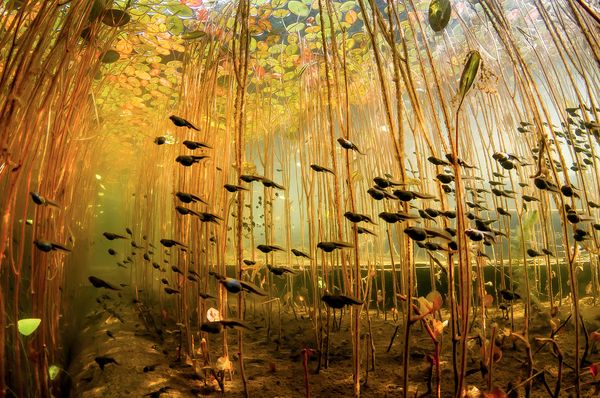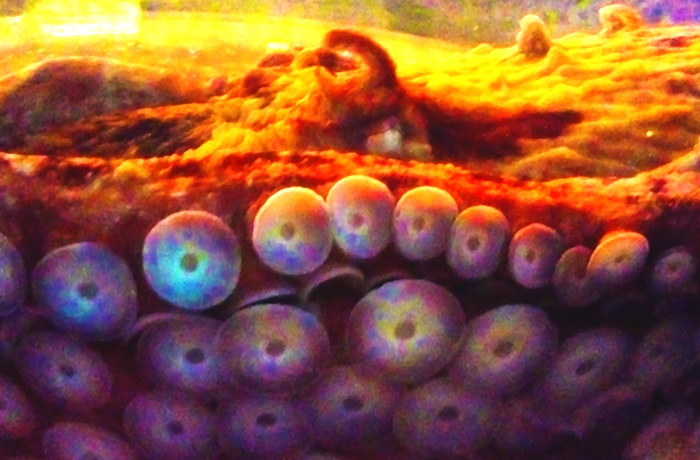More Than a Tad
Feb 7, 2013
 Tadpoles swarm amongst the lily stalks in a Canadian pond, in a photo submitted to National Geographic by Campbell River underwater photographer Eiko Jones.
Tadpoles swarm amongst the lily stalks in a Canadian pond, in a photo submitted to National Geographic by Campbell River underwater photographer Eiko Jones.
Feb 7, 2013
 Tadpoles swarm amongst the lily stalks in a Canadian pond, in a photo submitted to National Geographic by Campbell River underwater photographer Eiko Jones.
Tadpoles swarm amongst the lily stalks in a Canadian pond, in a photo submitted to National Geographic by Campbell River underwater photographer Eiko Jones.
May 18, 2016
 A Giant Pacific Octopus at the Seattle Aquarium posed recently for my mother to take a picture with her phone.
A Giant Pacific Octopus at the Seattle Aquarium posed recently for my mother to take a picture with her phone.
These varmints can weigh up to 150 pounds and spread their arms to wrap up a house. The 200 suckers on each arm are used to trap and hold prey, especially crabs and other crustaceans, which the octopus may paralyze with toxic saliva before tearing apart with its parrot-like beak.
To ambush its prey, the octopus hides amongst the rocks and seaweed, blending in with its surroundings by changing color at will. It can even change its texture, mimicking its surroundings by raising lumps or knobs of muscle.
The entire animal is so squishy and transformable that only its beaklike mouth sets a limit to its shape-shifting. If it wants to, a Giant Pacific Octopus can squeeze itself through a hole the size of a lemon.